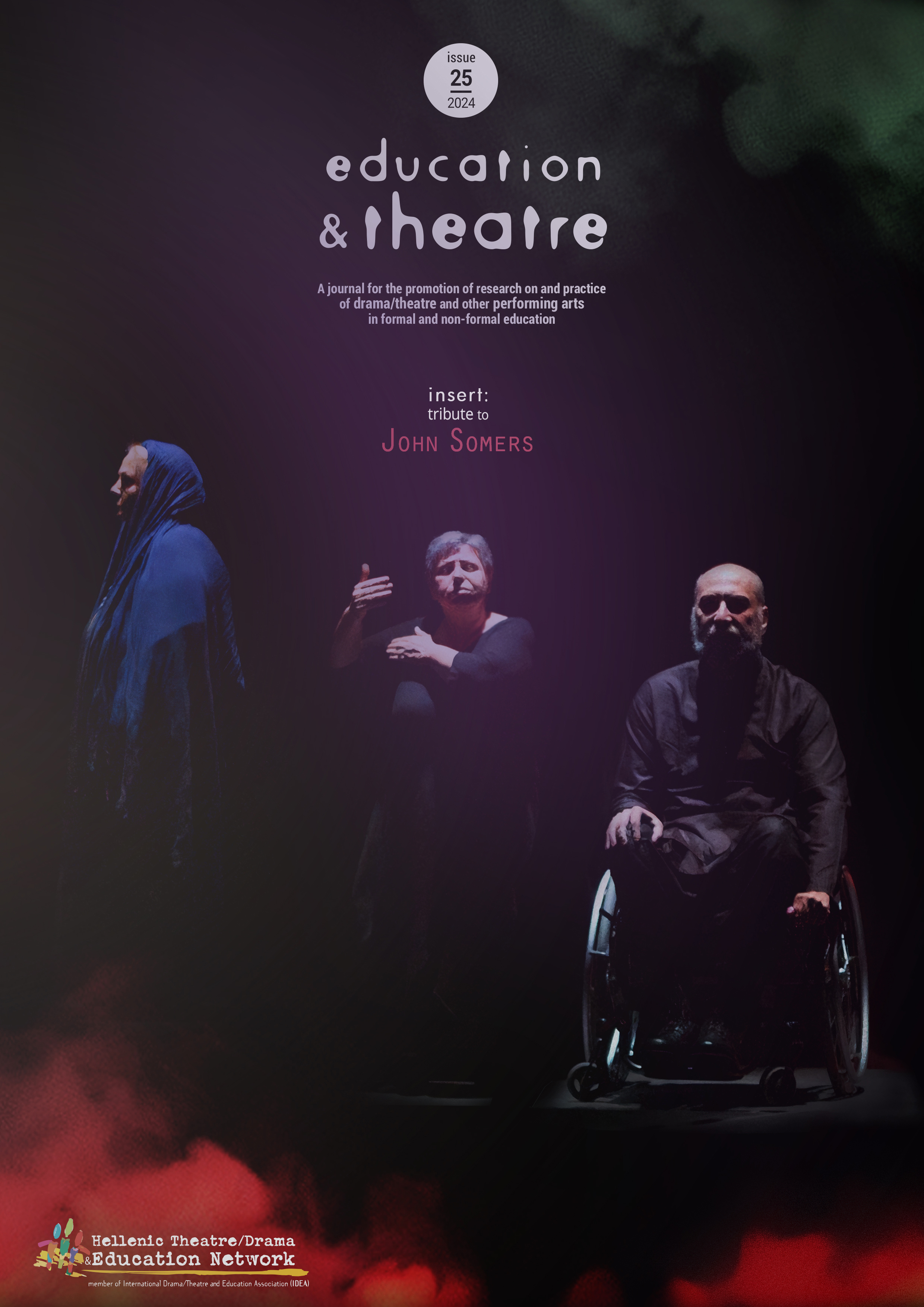Narrative, drama and the compound stimulus (republishised article)

Published:
Dec 28, 2024
Keywords:
story narrative drama compound stimulus workshop
Abstract
This article is divided into six sections. It highlights the centrality of story to human existence, the key to drama’s effectiveness as a change agent, and then explores the implications for young people and for the drama they create. Section three describes the theory that underpins the use of a “compound stimulus”, a way of drawing participants into the fictional world and the exploration of specific stories. It also outlines the ways in which the compound stimulus should be used and provides case studies of its use. Finally, section six reflects on applications of the compound stimulus.
Article Details
- How to Cite
-
Somers, J. (2024). Narrative, drama and the compound stimulus: (republishised article). Education & Theatre, 25, 70–79. https://doi.org/10.12681/edth.37657
- Section
- Insert - Tribute to John Somers: His legacy, memories and stories from people who knew him
Downloads
Download data is not yet available.
References
Cousins H., & Somers J. (2001). The role of theatre in education in health education. New England Theatre Journal, 12, 1–26.
Hardy, B. (1977). Narrative as a primary act of mind. In M. Meek, A. Warlow, & G. Barton (Eds.), The Cool Web (pp. 12–23). The Bodley Head.
Jackson, A. (1993). Learning through theatre: New perspectives on theatre in education (2nd ed.). Routledge.
Novitz, D. (1997). Art, Narrative and Human Nature. In L. Hinchman & S. Hinchman (Eds.), Memory, identity, community (pp.143–160). State University of New York Press.
Somers, J. (1996). The nature of learning in drama in education. In J. Somers (Ed.), Drama and theatre in education: Contemporary research (pp. 107–120). Captus Press.
Somers, J. (1999). How teachers choose what to do in drama lessons. In C. Miller & J. Saxton, (Eds.), Drama and theatre in Education: International conversations (pp. 289-297).
The American Educational Research Association, Arts and Learning Special Interest Group & the International Drama in Education Research Institute.





